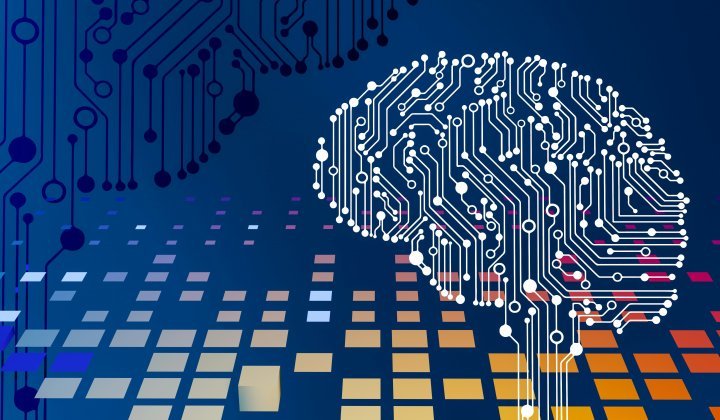The Kruger National Park isn’t somewhere one expects to find a traffic jam. But with around two million visitors per year, it’s not surprising that this has happened before and will likely happen again.
“Everyone’s chasing that big five experience,” says Selene Brophy, editor of Traveller24, a website that has reported on the congestion before. “They’ve looked at ways to control numbers using technology with online bookings and gate quotas during peak holiday periods, but when there’s a kill or a phenomenal sighting, the likes of GPS and being connected all the time mean there’s an influx of visitors. And it’s hard because people pay lots of money – good money that empowers the communities – and they want to be rewarded.”
An influx of tourists
While arrivals are important for new destinations, what we’re starting to see is overtourism in specific places, from popular natural attractions to areas like the Bo-Kaap, one of the oldest neighbourhoods in Cape Town. Despite its cultural history and strong Muslim heritage, most tourists seem more interested in photographing the colourful houses for Instagram.
“We’ve got hordes of people coming through in busloads every single day,” says Enver Duminy, CEO of Cape Town Tourism. “They don’t realise that this is a living, working community, struggling with two things: 1. the volume of people with buses blocking their driveways, and 2. tourists assuming their homes are museums that they can just walk into. Those tensions have gotten to a point of where the community has demonstrated against tourism.”
A lack of traveller awareness
For Duminy, the first step in managing these tensions was to engage with the community to understand its wants and needs. “As Cape Town Tourism, even though our mandate is destination marketing, we realise that we’ve got a role to play in destination management as well,” he says. “And the first thing we did was to listen. That’s difficult for a DMO [destination marketing organisation] whose job is to talk all the time. But through the listening exercise, we found a problem around respect and the lack thereof.”
Indeed, Duminy believes that even after explaining the benefits of tourism, some communities will choose to say no to this value; this decision should be respected. It’s only in the communities that say they want tourists where the process should go to the next step.
...make sure everyone benefits from the growth of tourism and the great opportunities it can provide.
“There’s often a lack of awareness from travellers and operators around the cultural sensitivity of the destinations they’re visiting,” he says. “So we need to start engaging with the operators – we know who they are because their buses are all parked there – and ask them what they can do to educate the tourists about the neighbourhood they’re visiting.”
Working together to address the challenges
Beyond making sure that visitors show basic respect by not littering in the streets or traipsing into people’s homes, Duminy also believes in the importance of having a positive impact in the communities, especially those where high unemployment make tourism even more of a much-needed boost. It shouldn’t just be a case of tourists who come for five minutes, take a photograph, and then leave the locals to clean up the mess, a cycle that caused the anger in the first place.
“One of the ideas we’re throwing around is creating a trust, where money that gets generated through tourism goes back into the community and creates opportunities for employment, education, etc.,” he says. “It’s about working together to address the challenges they face as a community and finding ways to collaborate in a way that everyone can benefit. That’s the journey we’re on.”
...most tourists seem more interested in photographing the colourful houses for Instagram.
Educating tourists and locals
Another key aspect is to ensure that there is geographic spread across Cape Town (as well as a timing spread through initiatives like staggered school holidays). It’s about showcasing the lesser-known experiences and attractions across the city and elevating them through marketing. It’s also about playing a meaningful role in educating tourists so that they can experience a lot more of what the destination has to offer.
“It’s important for us to showcase the diversity and, in doing so, start pushing people to other areas as well,” Duminy says. “But it needs to be managed. We can’t expect to take people from one community to another and watch the same thing happen. That’s why we as Cape Town Tourism see ourselves as the connector between the visitor, the industry, the community, and the city government itself.”
The same goes for educating locals. Overtourism might make it seem like the ‘problem’ is with foreign visitors when there’s a huge impact from the domestic market and city residents too.
“We’ve got a responsibility as citizens to make sure that we sustain it for future generations because success of tourism is about management of a destination,” he says. “And management is about everybody in the destination that is affected. For years now, Cape Town Tourism has been of the opinion that a great place to live is a great place to visit. And we need to get that right continuously, otherwise the visit means nothing.”
Changing the operating model
Ultimately, it comes down to balance and management. But it all starts with conversation: listening to all the relevant parties and finding a way to either agree to disagree or to make sure everyone benefits from the growth of tourism and the great opportunities it can provide.
“As DMOs our operation model needs to change because there are so many other competing platforms and disruptive technologies doing what we used to do,” Duminy says. “The problem is that for a long time we were always defined by the term ‘marketing’. And once you’re given the label, you live in a world where it defines you. So what we’re doing as Cape Town Tourism is asking how we can unshackle ourselves from that M. What we’re looking at is creating a DXO [destination experience organisation] that’s relevant to the times.”
Solving the problem
McKinsey predicts that by 2020, the twenty most popular countries will add more international arrivals than the rest of the world combined. This means there are still plenty of places around the world that are unexplored. DMOs, some overly impacted by overtourism and others less impacted or not impacted at all, can all learn from one another and take steps to prepare themselves for if it ever happens to them. Otherwise the trend will lead to us destroying destinations in a way that can’t be undone.
“I think the goal is to dial down the focus on certain places and dial up the focus on others,” Duminy says. “And if everybody takes a bit of responsibility, it does shift the needle slightly. But I think the first thing is that we all recognise that our behaviour and the way we promote a destination must change. What I’m happy to say is that if other DMOs don’t want their tourists, they can send them to us. If there are over a billion tourists, how can we make sure that we all spread the love?”
Overtourism around the world
Overtourism isn’t a new phenomenon but it’s been getting a lot of headlines because of the impact it’s creating in cities like Venice (where a cruise ship recently crashed into a tourist boat), Barcelona (where a piece of graffiti read “tourists go home, refugees welcome”), and more. We spoke to travel blogger Keith Jenkins (www.velvetescape.com) for an international perspective.
What’s been your experience of overtourism?
When I first moved to Amsterdam about thirty years ago, it was a vibrant city but there weren’t many tourists. Now it’s just packed. With all the things going on, there are some good points that tourism brings but there are lots of bad points with a negative impact as well.
How have locals responded?
For people living in the city, there are tons of tourists walking past houses, knocking on doors, making noise, littering, and even throwing up in the streets. Locals are putting up posters in their windows saying “I live here so please be more respectful”, something that you shouldn’t have to ask as a human being.
What solutions come to mind?
The tourism board has put an emphasis on creating partnerships with the local communities and businesses, all to make the city more liveable. They’ve also rebranded certain sites like Amsterdam Castle and Amsterdam Beach, both of which are out of the city but now draw tourists away from the busy parts because they still think they’re in Amsterdam!
Lion’s Head case study
Hoppa.com recently ranked Cape Town as one of Instagram’s most popular destinations for 2019. And one of the city’s top spots for photographers is Lion’s Head, which was closed earlier this year to improve the infrastructure.
“We have more than 900 trails across the Western Cape but this particular hike gets all the attention,” Brophy says. “If there’s a full moon, you’re going to see hordes of people. So we as media highlighted that the safety was called into question. We worked with the various role players to get the correct commentary but also to educate people, from the tour operators to the tourists, to respect the regulations that they’re putting in place and to preserve our heritage experience.”
Indeed, the idea of presenting the real picture is one that Jenkins agrees with. “We all know that visuals play a big part in where we choose to go, with 40% of people in the UK aged between 18 and 33 choosing the destination of their next trip based on its Instagrammability,” he says. “People want to have that epic shot from their bucket list. But sometimes it’s irresponsible as we’ve seen with the rise of selfie deaths. That’s why, when there are hundreds of people lining up just to get their moment on Instagram, we have to relate the real experience.”




